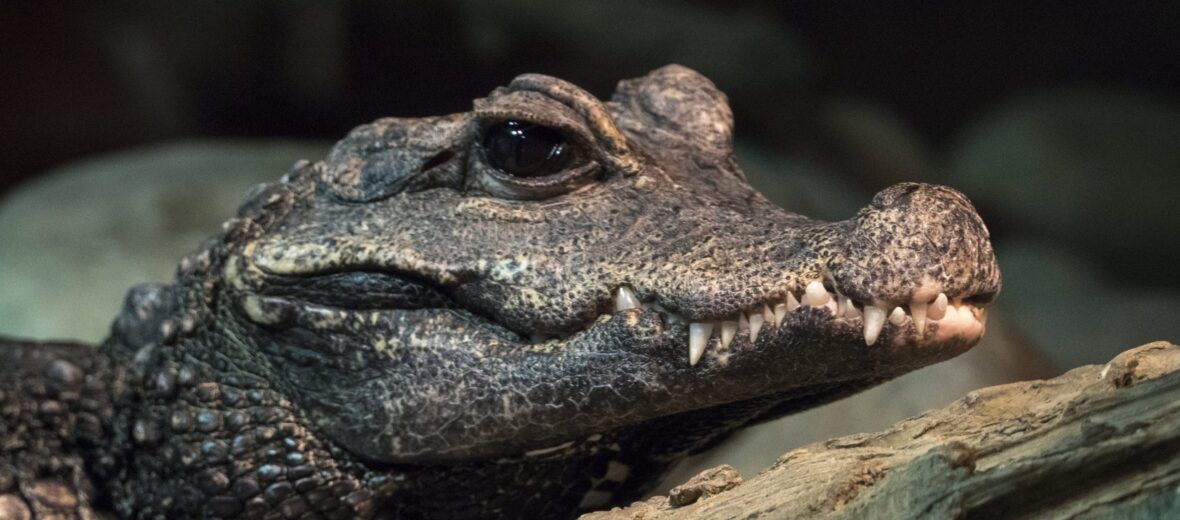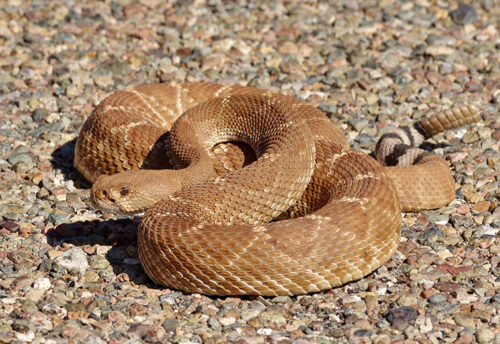
The African dwarf crocodile, aka African broad-nosed crocodile, broad-snouted crocodile, bony crocodile, or black crocodile, hails from sub-Saharan regions to west-central Africa. They can also be found in southern Senegal to the Democratic Republic of the Congo, and as far south as northern Angola. These critters prefer slow flowing currents, swamps with dense vegetation, and rivers in rainforest habitats. Sometimes they can be found in Savannah pools. Due to habitat destruction, civil unrest, hunting, and trapping these crocodiles are listed as Vulnerable by the IUCN.
First the Stats…
Scientific name: Osteolaemus tetraspis
Weight: Up to 180 lbs.
Length: Up to 6.2 feet
Lifespan: Up to 75 years
Now on to the Facts!
1.) These crocodiles are nocturnal (active at night).
2.) African dwarf crocodiles are, like other crocodiles, solitary and territorial.
3.) Like all crocodilians, they are ambush predators. Preferring to lay in wait for prey to happen by, then attacking with great speed.
4.) A group of crocs is called a congregation, float, bask, or nest.
5.) Dwarf crocodiles prey on frogs, toads, fish, crustaceans, birds, rats, mice, and other small animals. They will also eat carrion (dead animals), in a pinch.
But wait, there’s more on the African dwarf crocodile!
6.) Other crocodiles, large birds, and large mammals all prey on these crocodiles. As they mature, they end up with fewer and fewer predators, sans humans.
7.) African dwarf crocodiles are polygynous (males mate with multiple females in his territory).
Did you know…?
The female will carry her newly hatched offspring in her mouth and take them to the water. It was once thought that the females were cannibalizing her young, until it was later discovered that she is just taking them to the water’s edge.
8.) Females lay up to 20 eggs, in a mud and leaf nest, near the shore. The eggs incubate for up to up to 105 days.
9.) The eggs are incubated via the heat produced from the rotting vegetation.
10.) Like all crocodilians, the surrounding temperature dictates the gender of the hatchlings.
But wait, there’s still more on the African dwarf crocodile!
11.) When in water, they propel themselves via their vertically flattened tail. On land, they run, via galloping.
12.) Like all crocodilians, they possess nictitating membranes that act as protective eyelids, when submerging in the water. This protects their eyes and still allows for visual acuity.
13.) A special throat valve helps them to keep their mouth open, in water, and prevents water from being swallowed.
14.) Females watch over the eggs, while they incubate. As, if they are left unattended, they can be eaten by predators. The young are also protected, for a short time, by mom. This is to prevent cannibalism from the male crocodiles.
Now a Short African Dwarf Crocodile Video!
Be sure to share & comment below! Also, check out the Critter Science YouTube channel. Videos added frequently!
Want to suggest a critter for me to write about? Let me know here.



